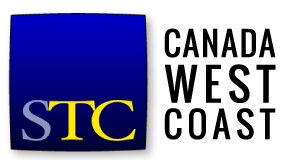 This month we welcomed people from Vancouver and Calgary.
This month we welcomed people from Vancouver and Calgary.
One writer asked about the best way to ensure that one’s work or volunteer responsibilities are covered in case of absence, whether from illness, holiday, or departure. One suggestion was to find a trustworthy person and hand them a succession plan as one would do when creating a will. Another effective option is to document procedures and provide on-the-job training to someone so that they are well prepared to take over. For a smooth handover, it’s important to have the relevant digital documents and security information such as various passwords well organized and accessible.
The discussion moved on to keeping one’s computer and email free of clutter to make it easier for the backup person. This could include spending a few minutes every week deleting unwanted files and emails, and using the filter option to delete similar emails in bulk. Someone suggested using the principles of “Swedish death cleaning,” a way of organizing and streamlining things to reduce the burden on others after you depart.
A writer with a long career gap wanted advice on getting back into the industry. To make up for lack of recent experience, is it more useful to enrol in a technical writing program or to build one’s portfolio by doing volunteer projects? Some technical writing programs can take a year or more to complete. Volunteer work provides greater scope for learning by trial and error. You could consider taking a shorter boot-camp course such as the STC’s TechComm Fundamentals Bootcamp.
In cases of employment gaps, it’s also a good idea to use a skills-based instead of chronological résumé. One should also tailor the résumé for each job by using the keywords from the job description and design a résumé that is compliant with an applicant tracking system (ATS).
We also talked about the difference between engaging and entertaining content. In content such as documentaries and instructional design, the audience expects the content to be both engaging and entertaining, whereas technical writing is expected to be engaging but not entertaining. For example, humour is usually discouraged in technical writing because it could be misinterpreted by readers from different cultural backgrounds.
Another topic was the difference between passive and active styles of writing. Passive writing is more detached while active writing “connects” to the readers and is easier to understand.
The Tech Comm Café provides networking opportunities, job leads, answers to work-related dilemmas, and a burst of professional energy to keep you motivated. We discuss technical writing tools and techniques, career planning, portfolios, and anything else related to working as a technical communicator.
We welcome anyone who’s interested in technical communication — contractor, in-house, student, long-time tech writer, STC member, non-member, career-changer, or recruiter. We hope to see you at the next meeting!
Next Meeting: ONLINE on Wednesday, November 15, 2023
- Subscribe to receive email announcements of future meetings.
- If you plan to attend, RSVP by 4 p.m. Wednesday, November 15, to receive login instructions.
Date: Wednesday, November 15
Time: 7:00-8:00 p.m. Pacific Time
Location: Online via Zoom
Agenda
- Introductions. Take 60 seconds to introduce yourself, your background, current activities. A good chance to try out that new elevator speech.
- Announcements and job leads. If you know of an interesting event or a job opening, or you’re looking for work, share it with the group.
- Brainstorming Q&A. Ask about a work-related problem and discuss potential solutions.
- Speed networking. Make new contacts and discuss your professional backgrounds and goals.
